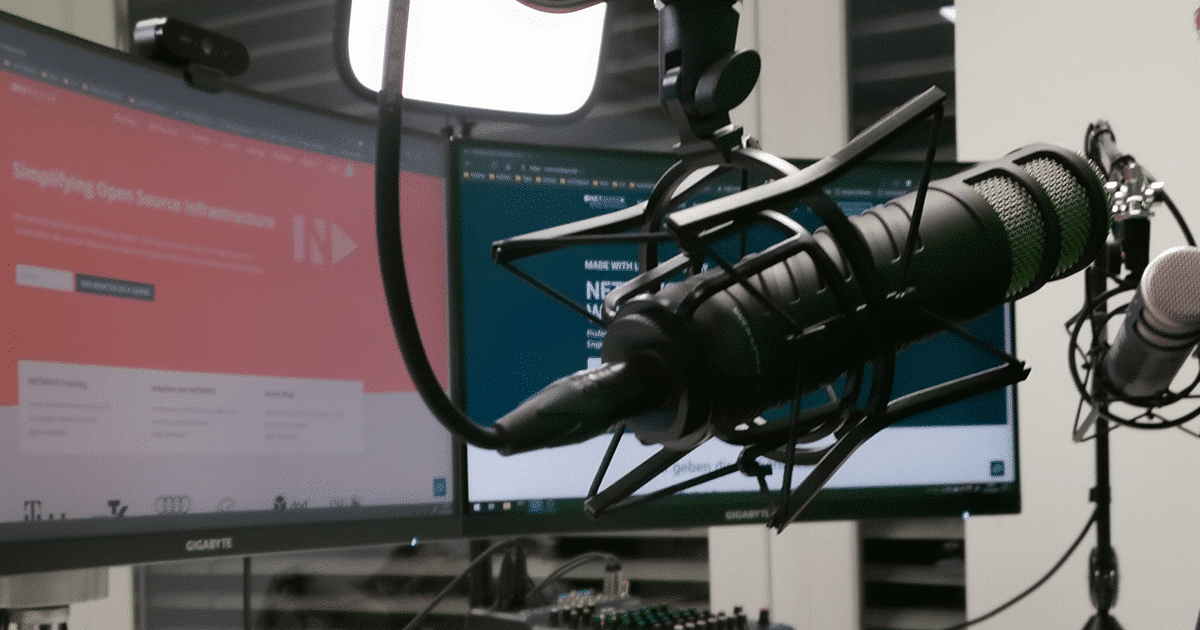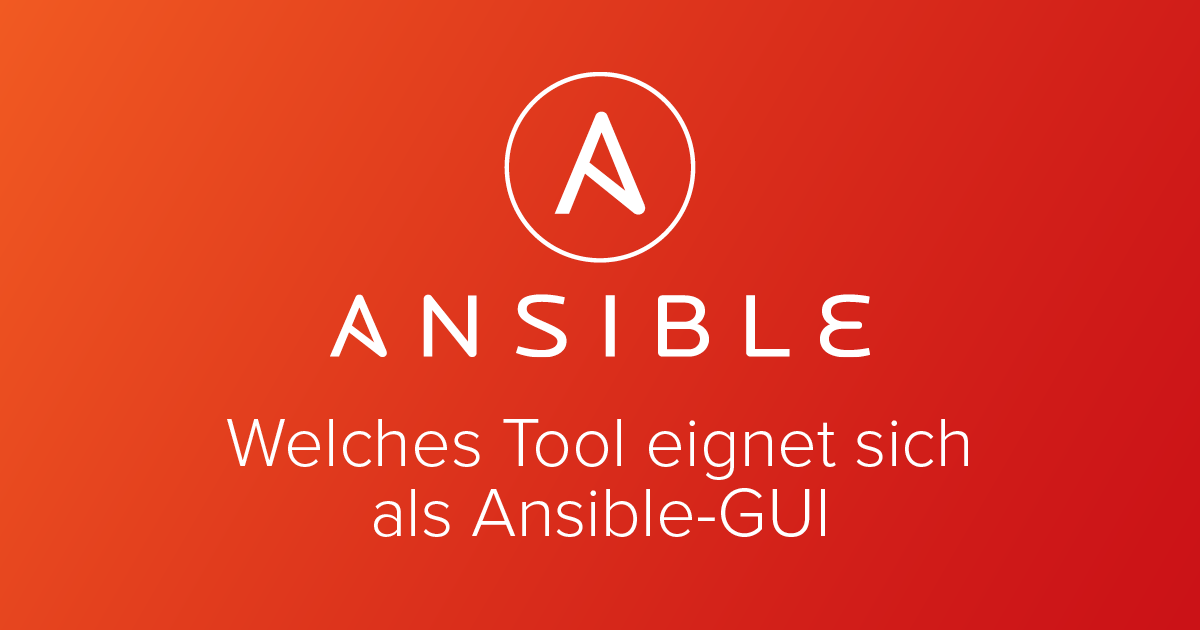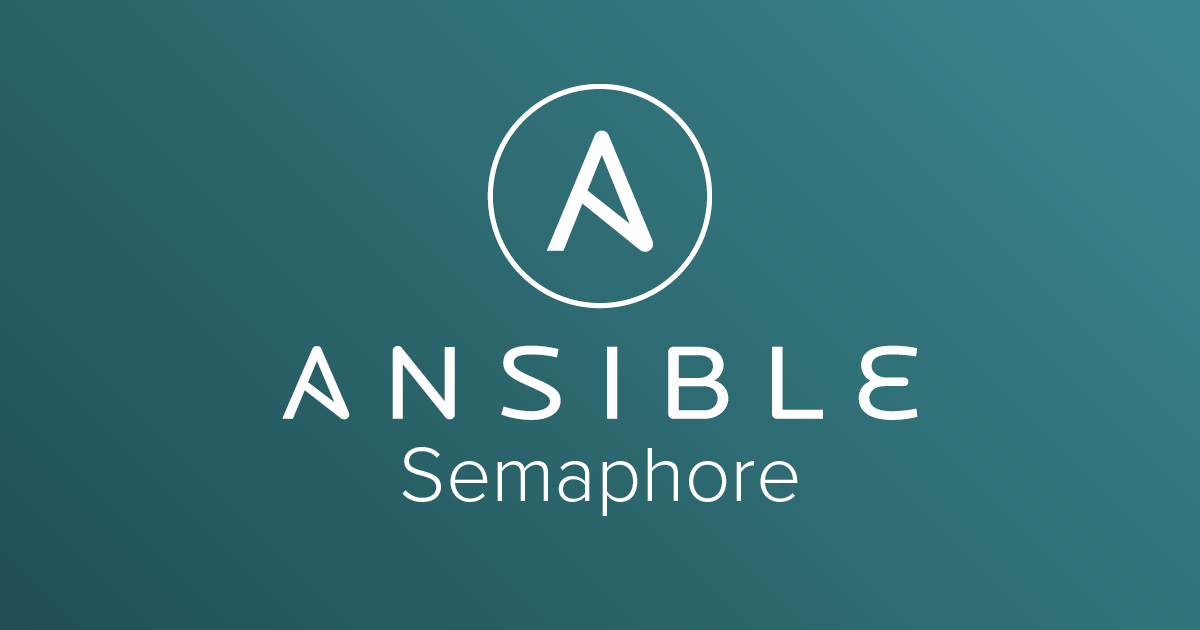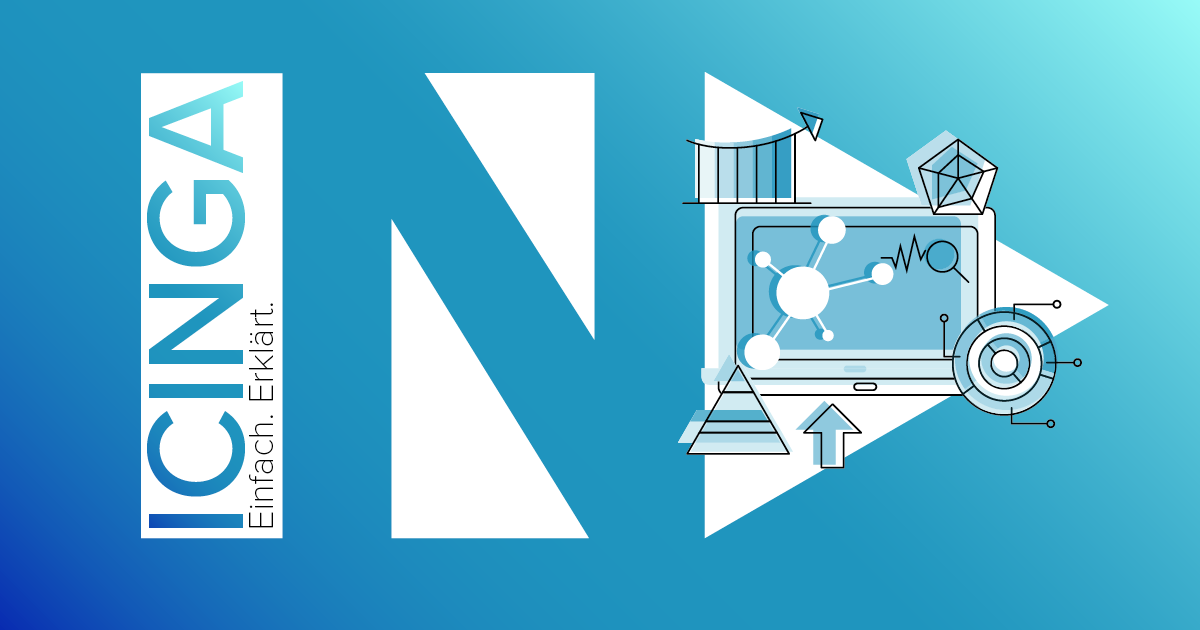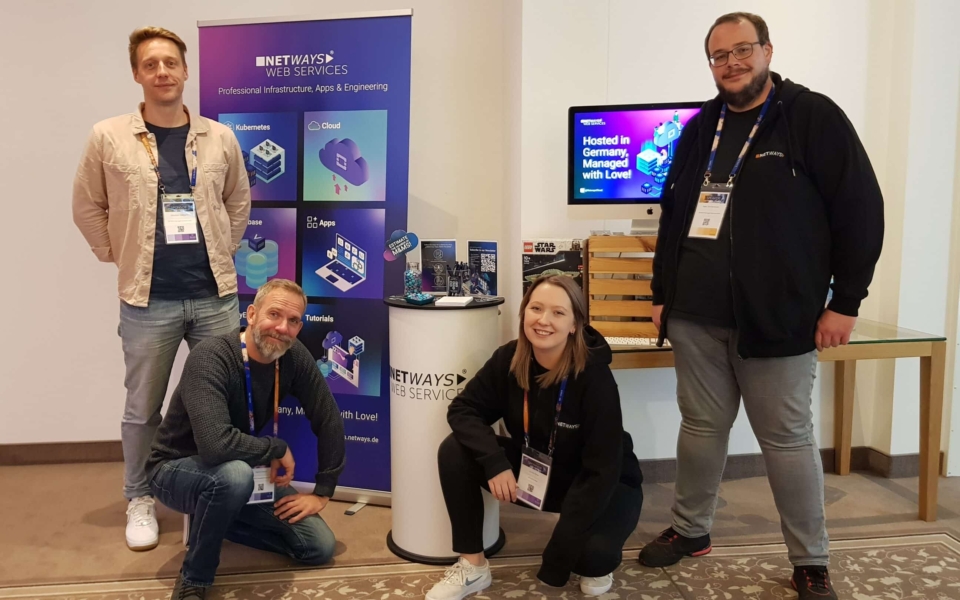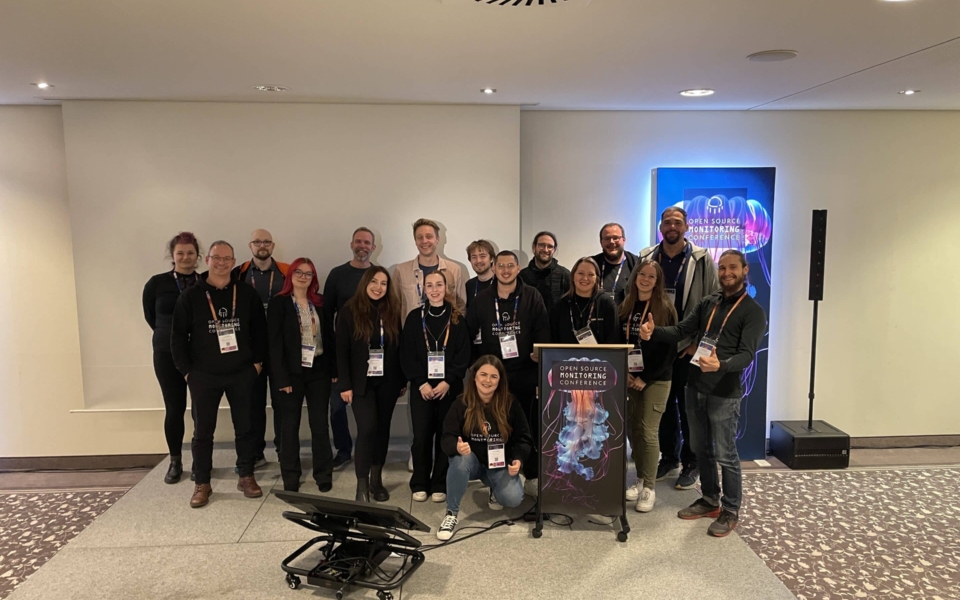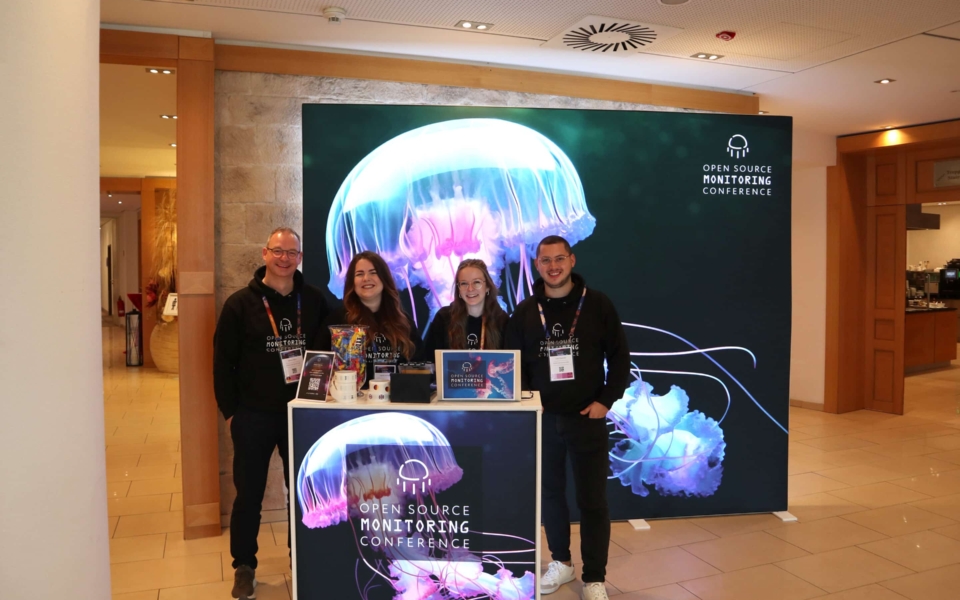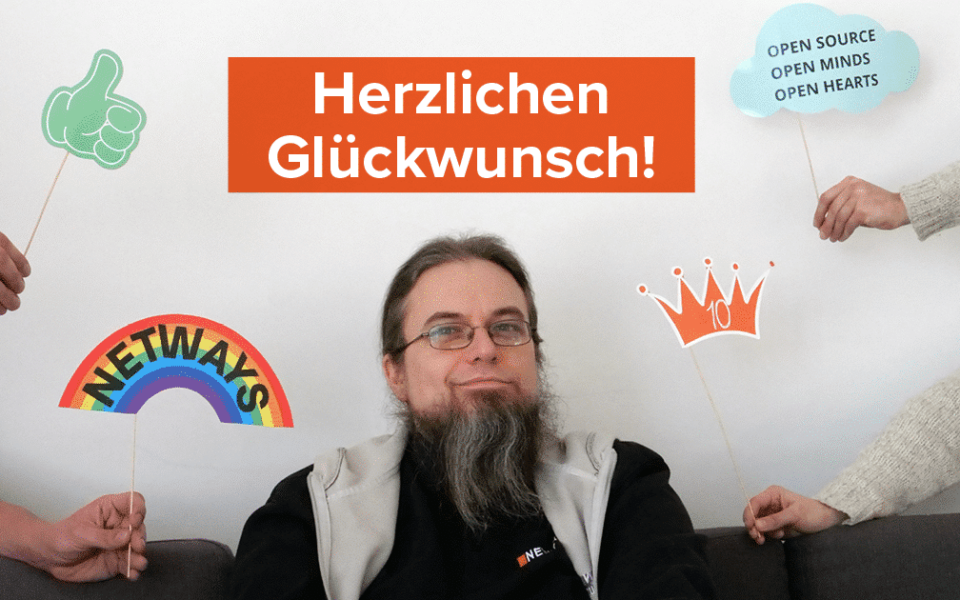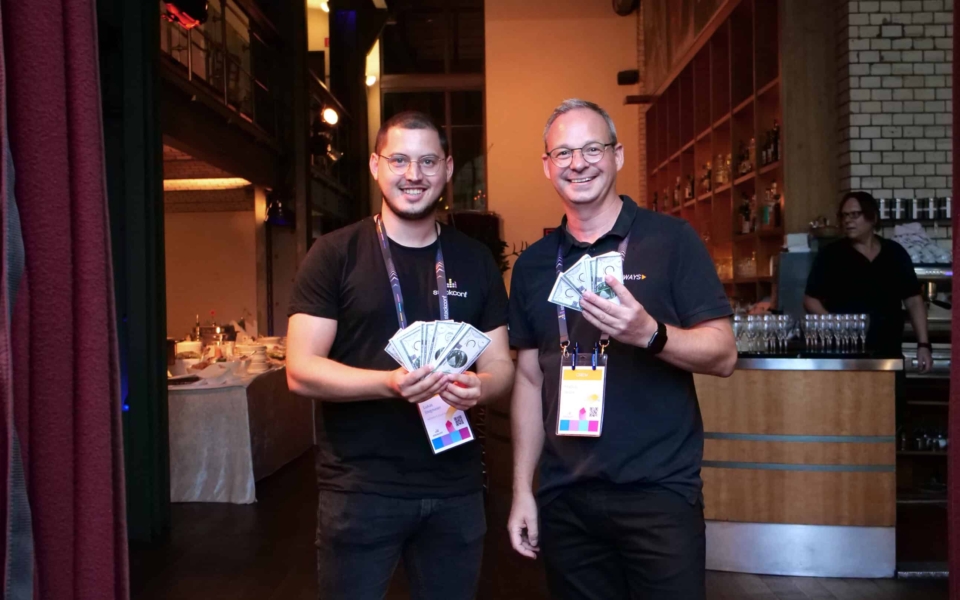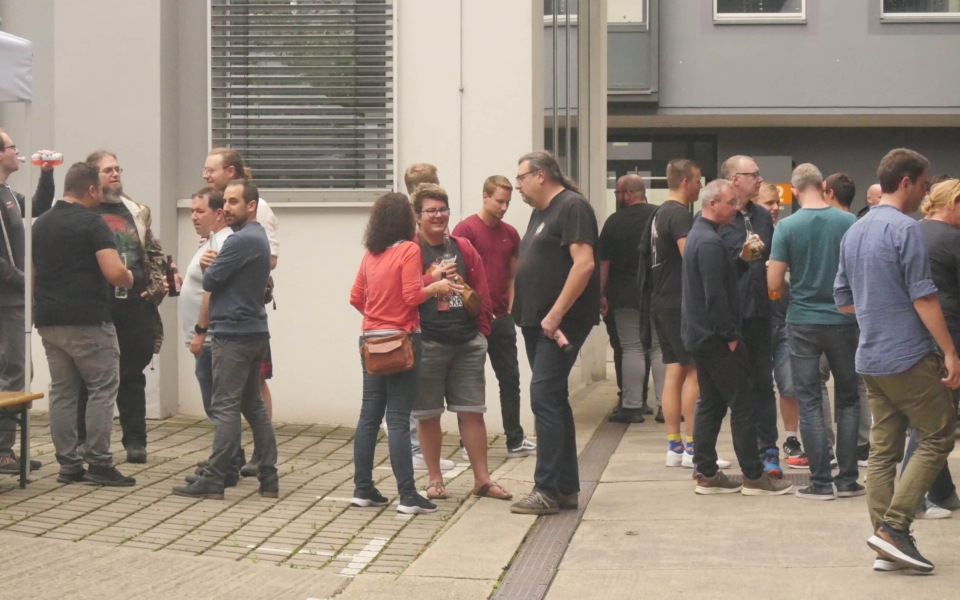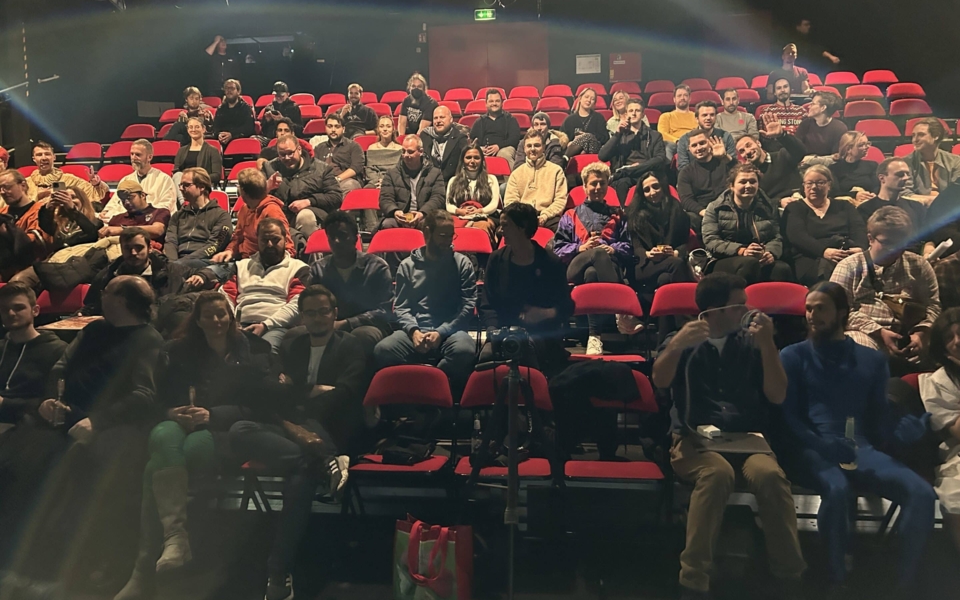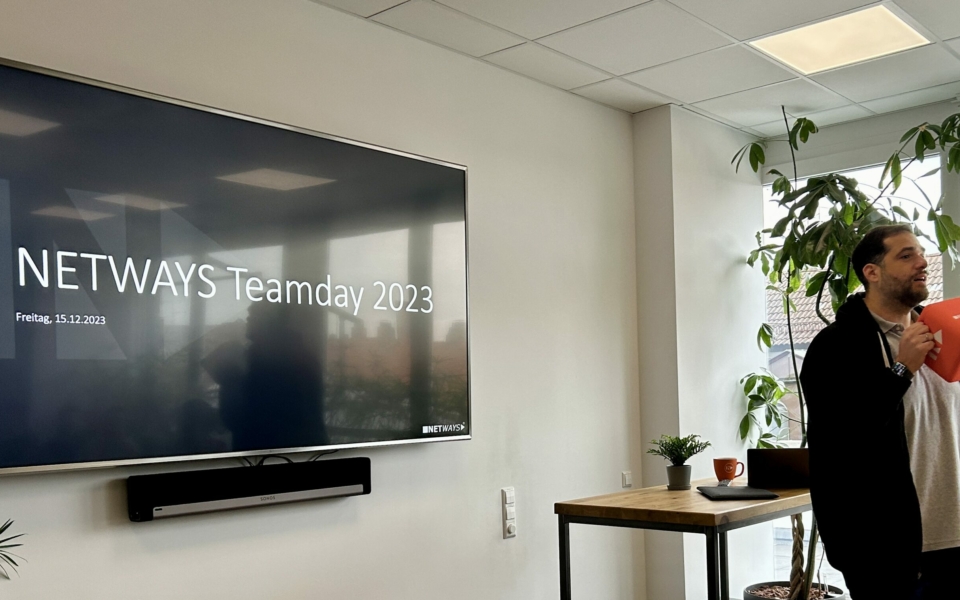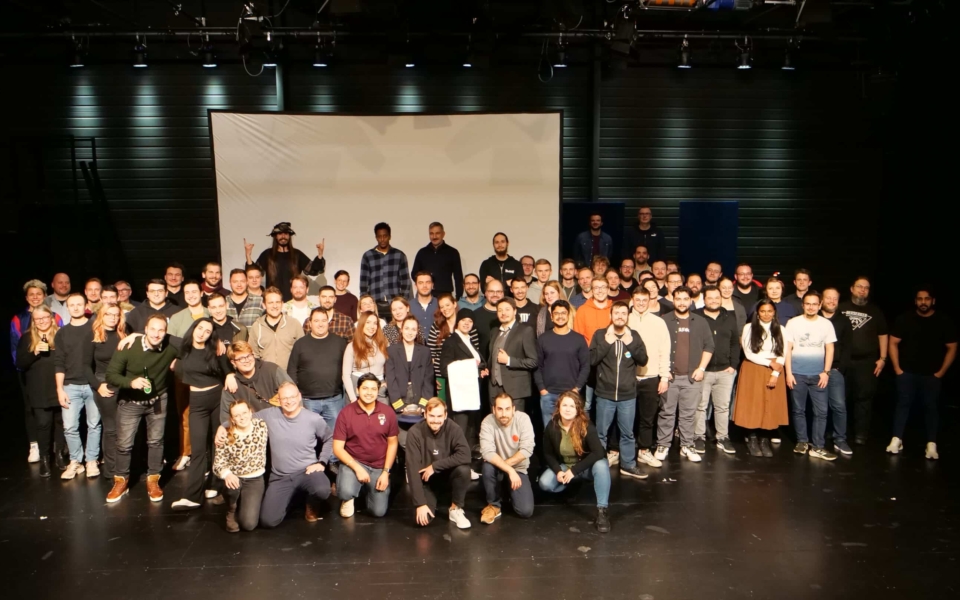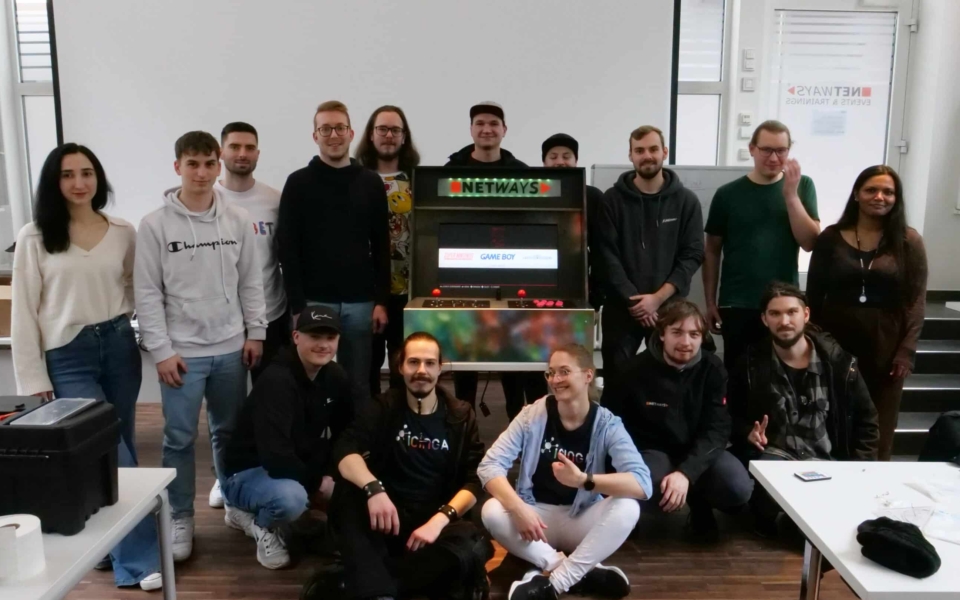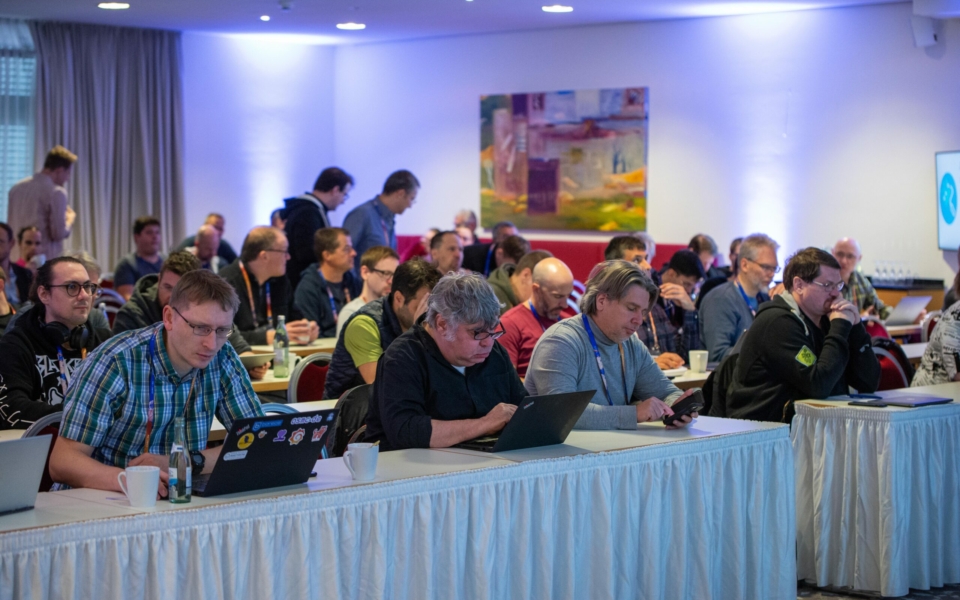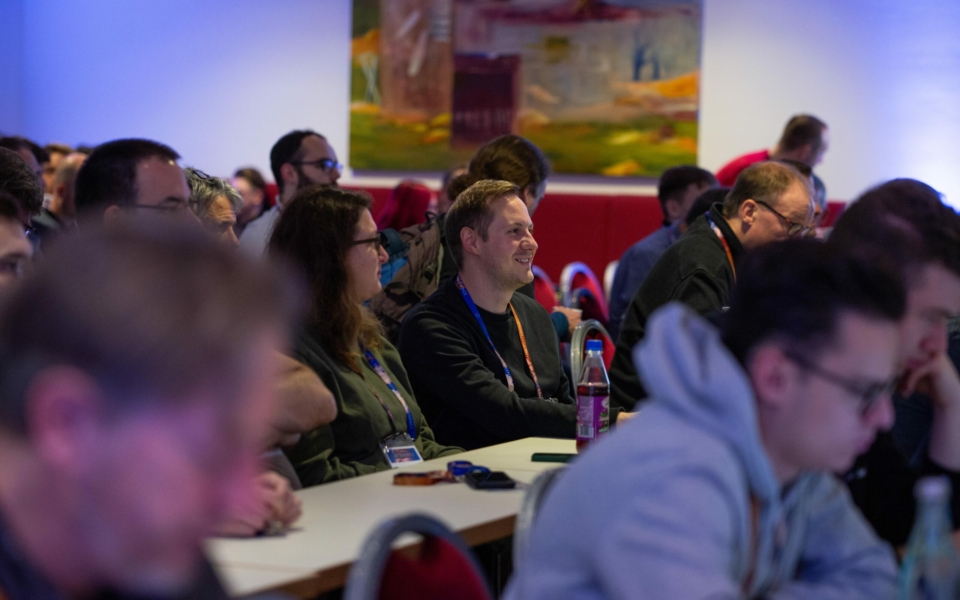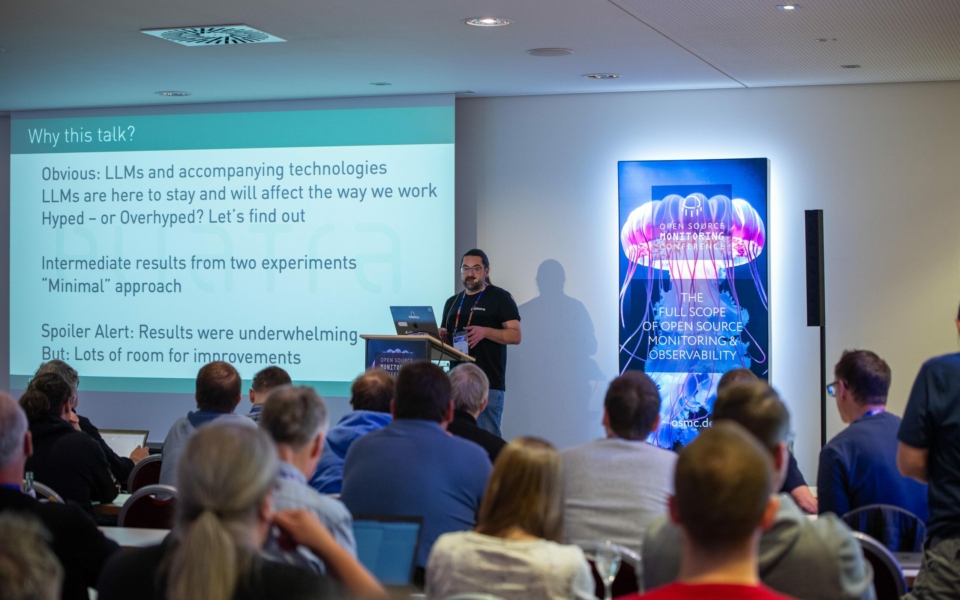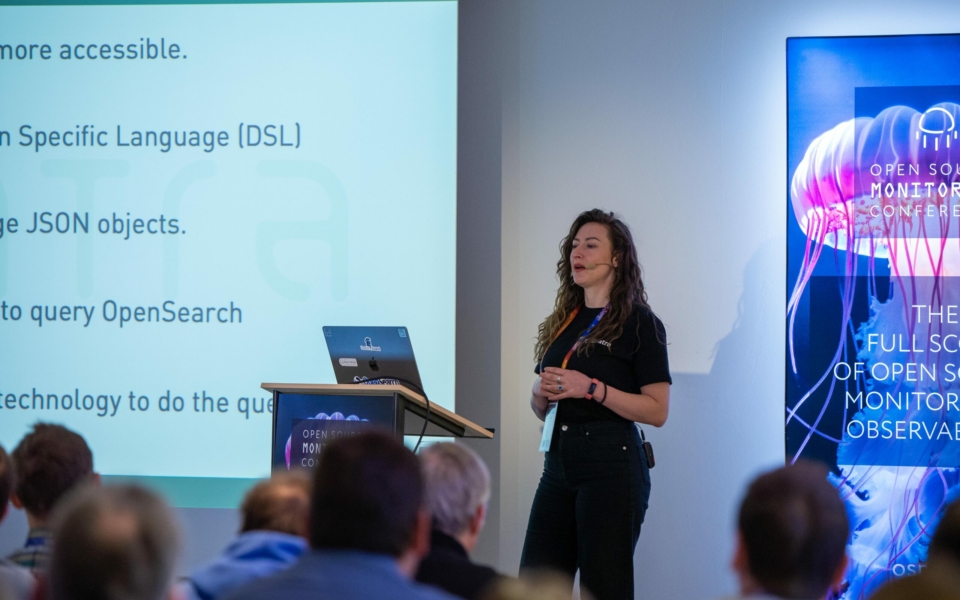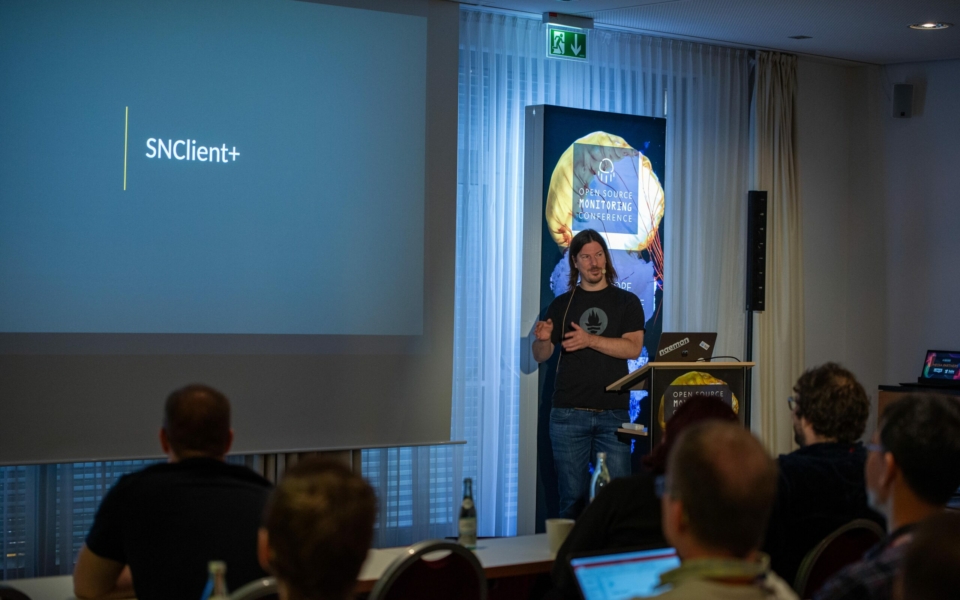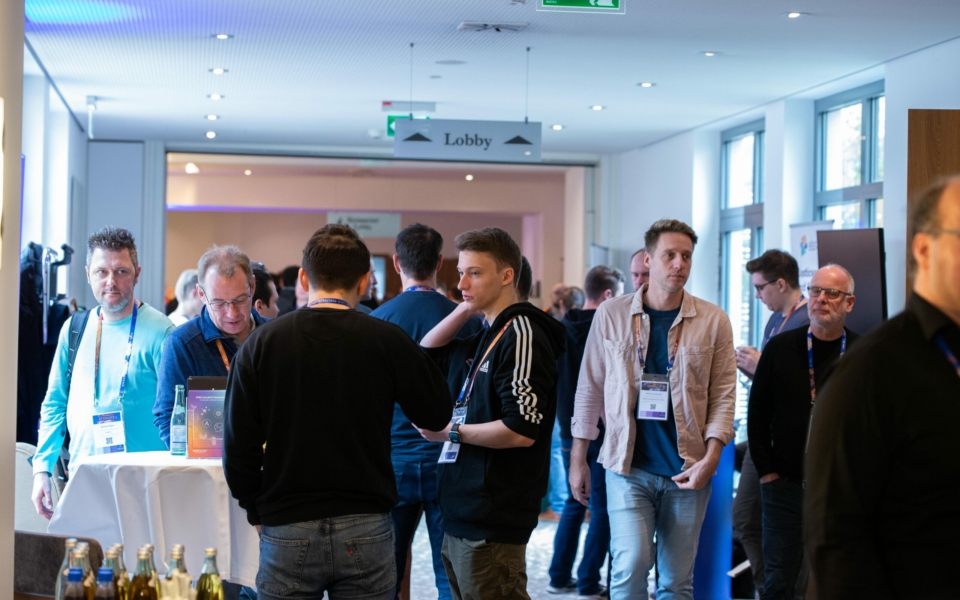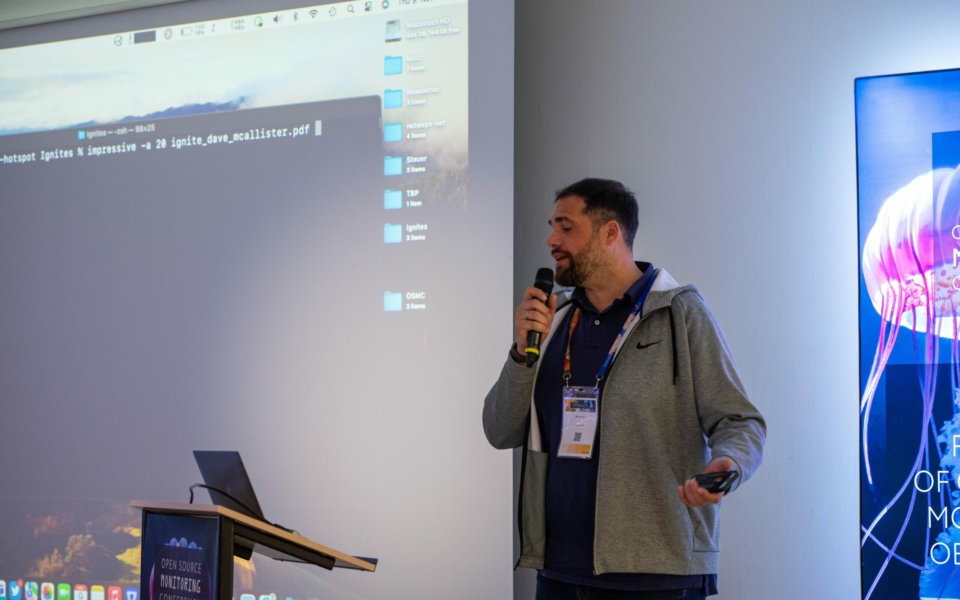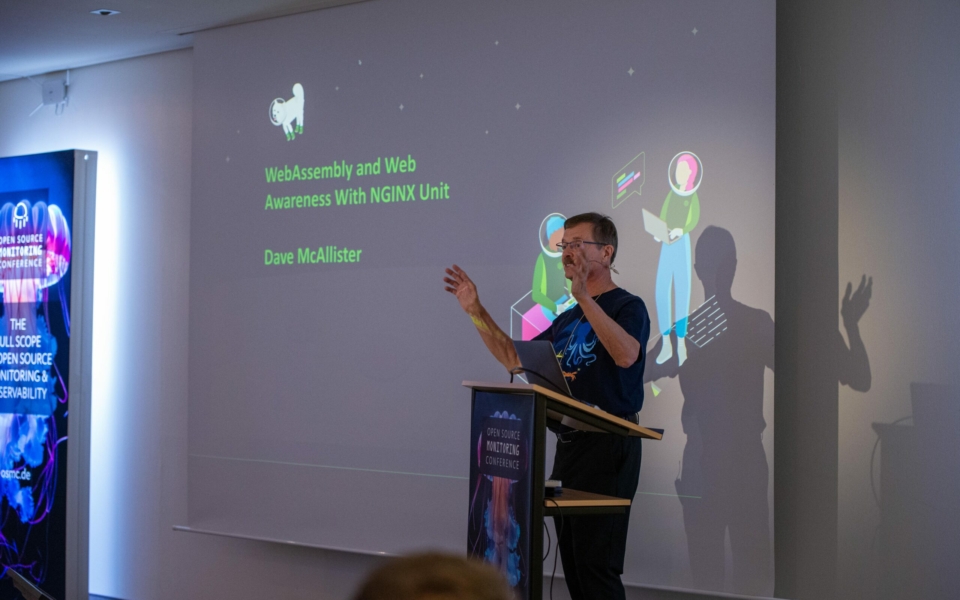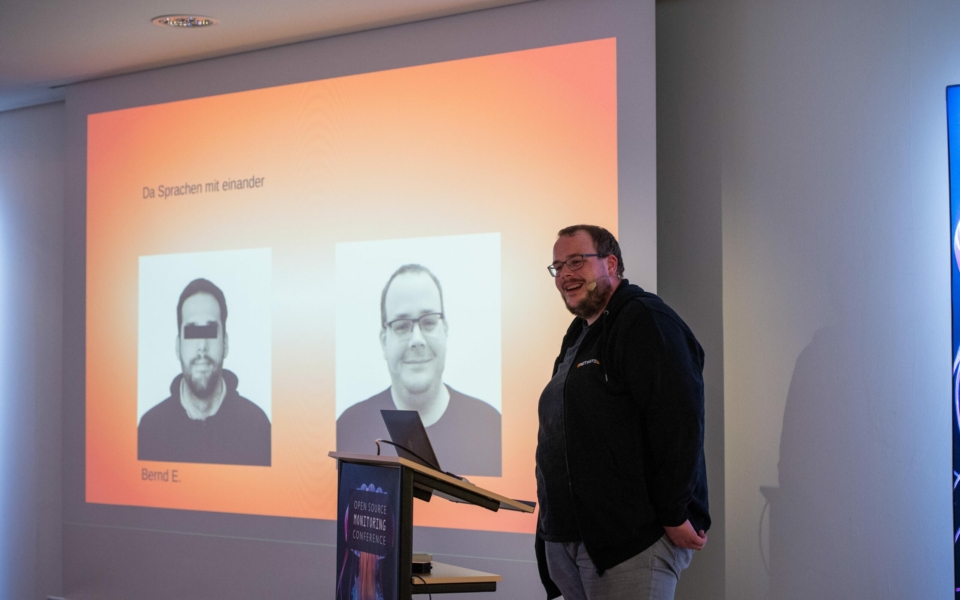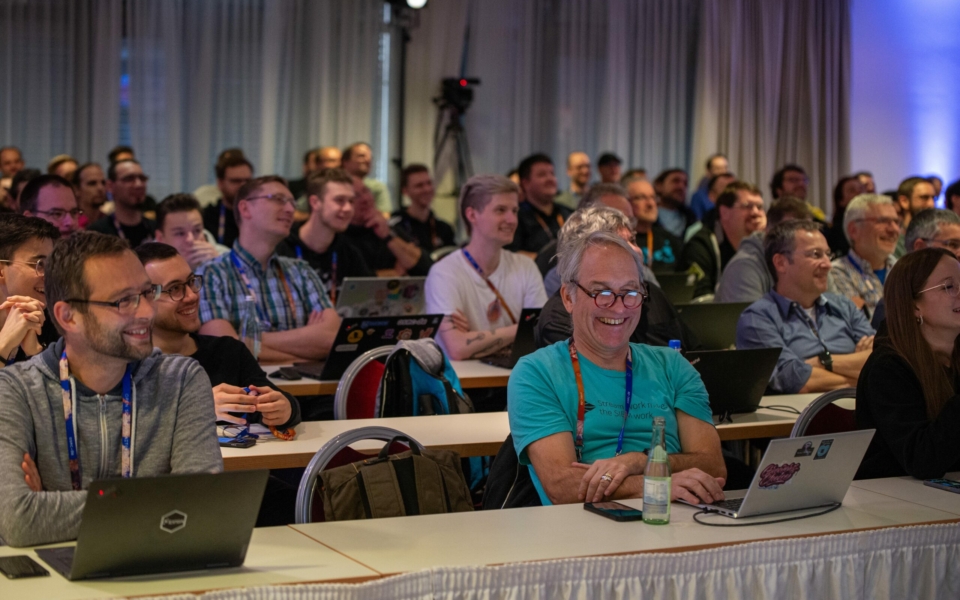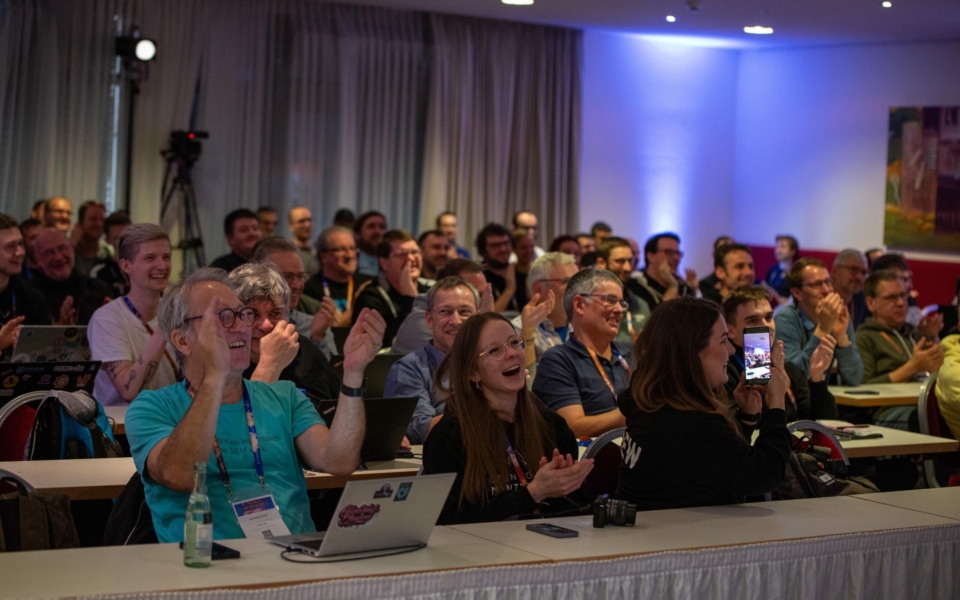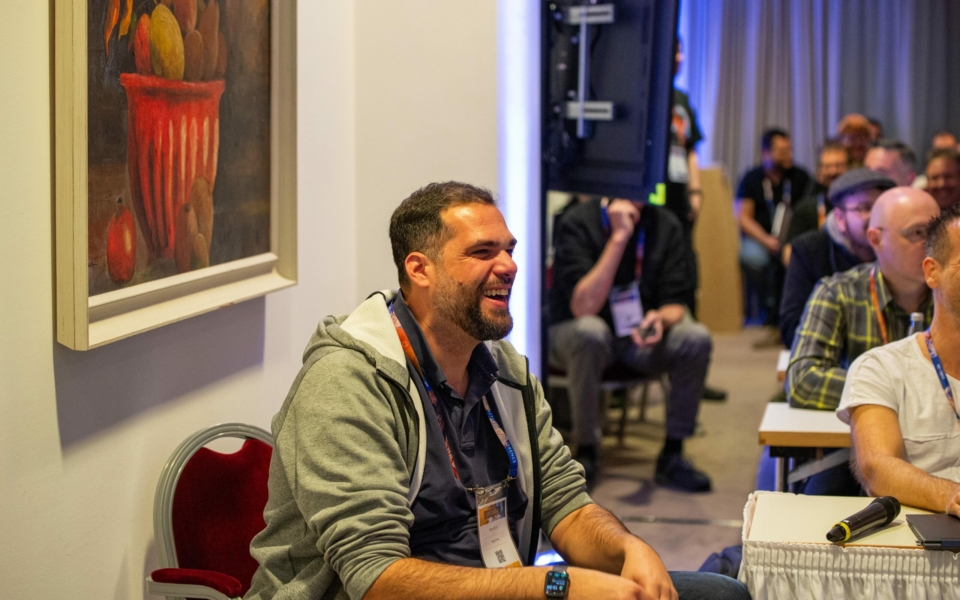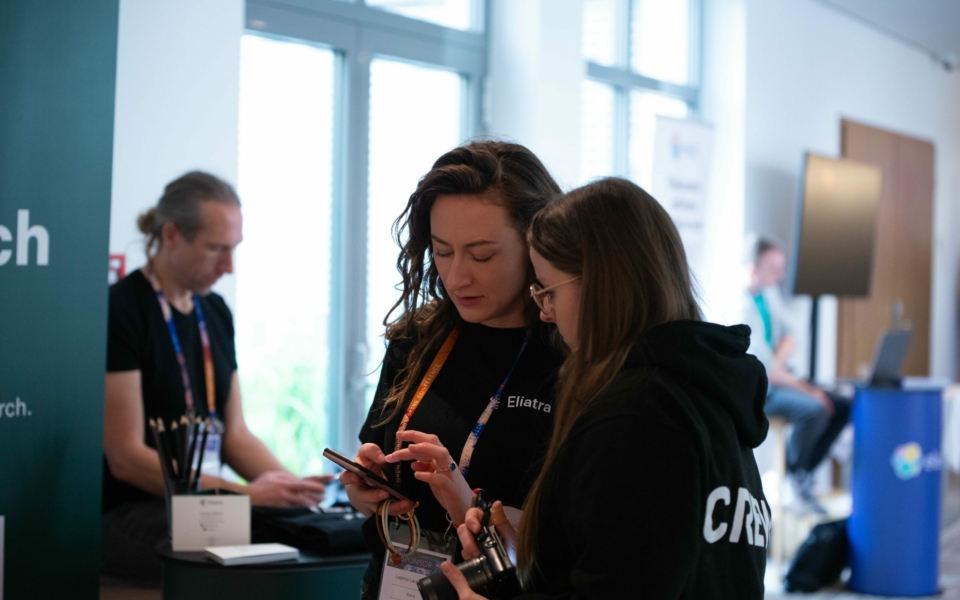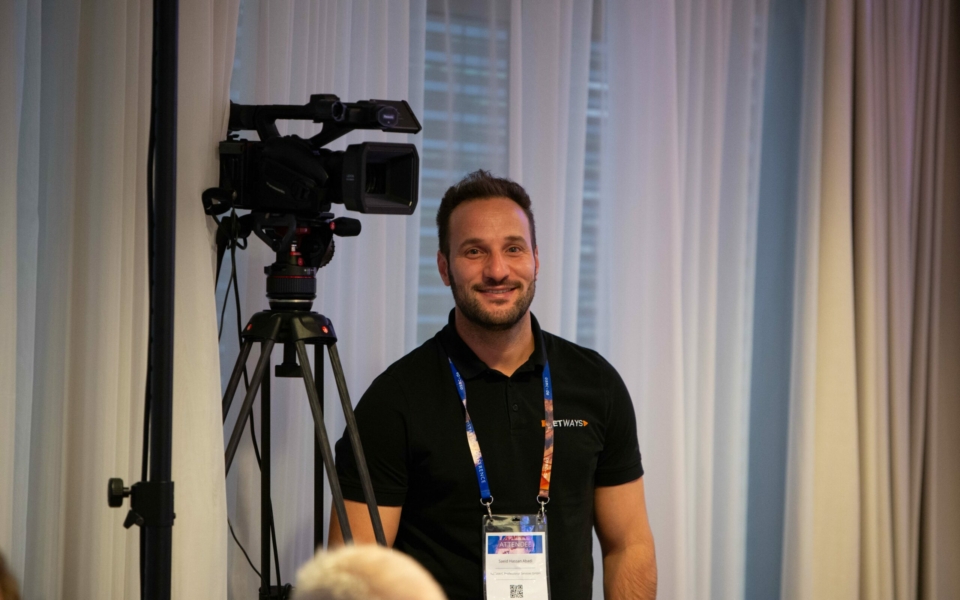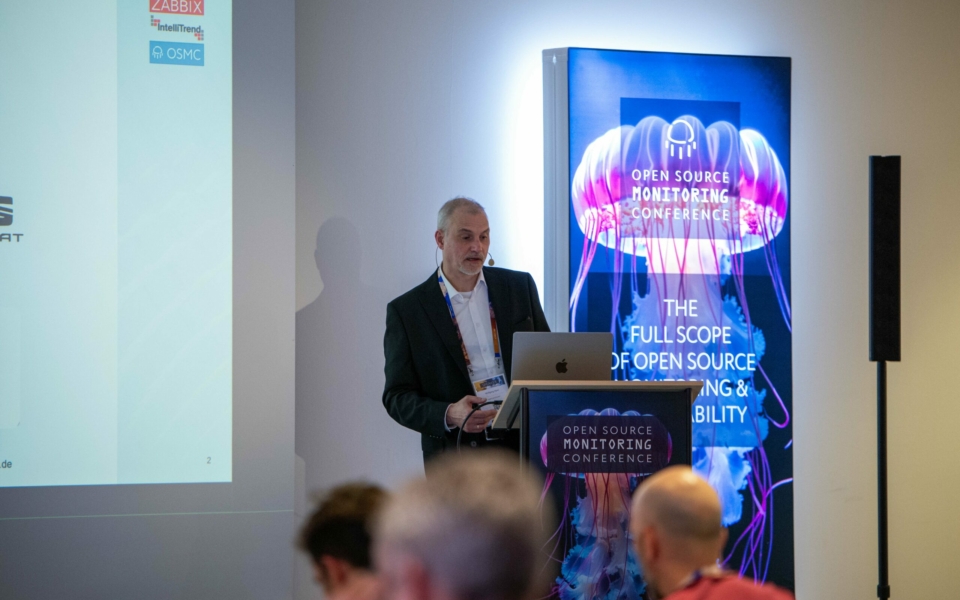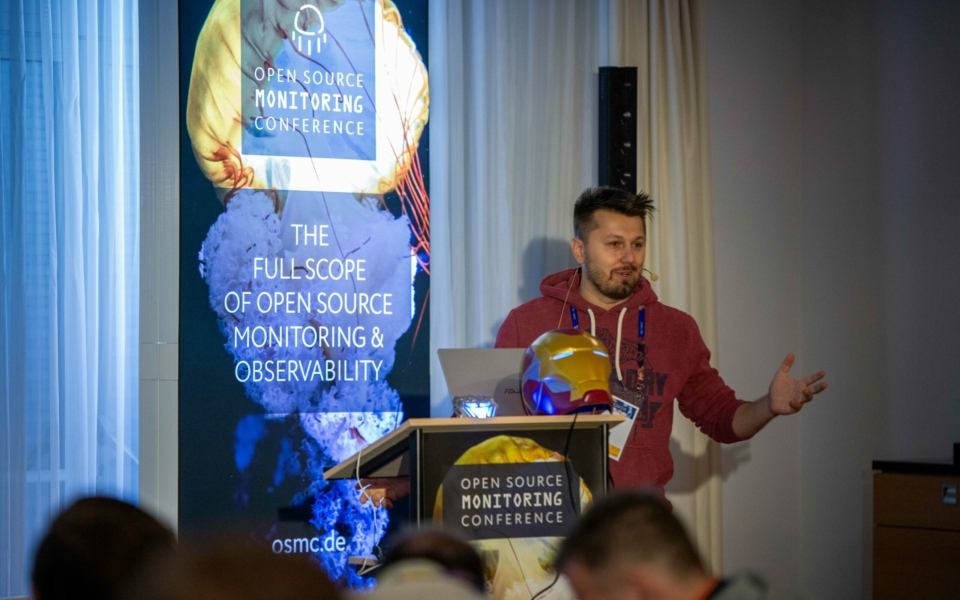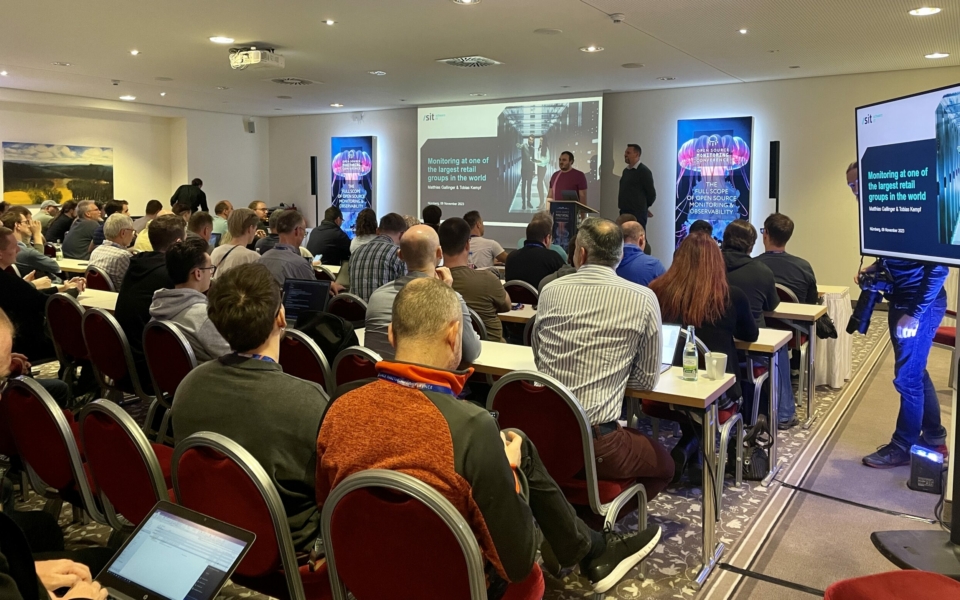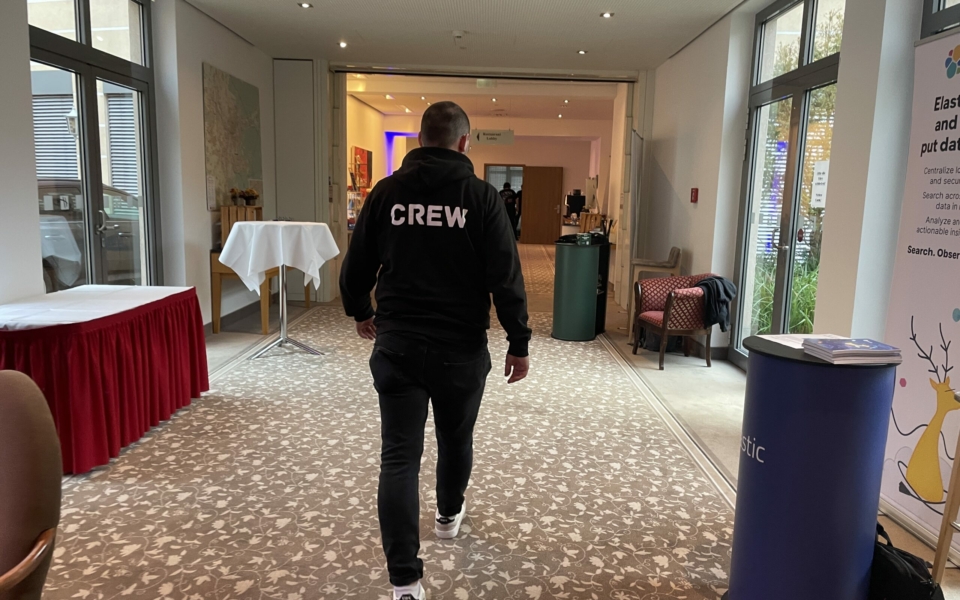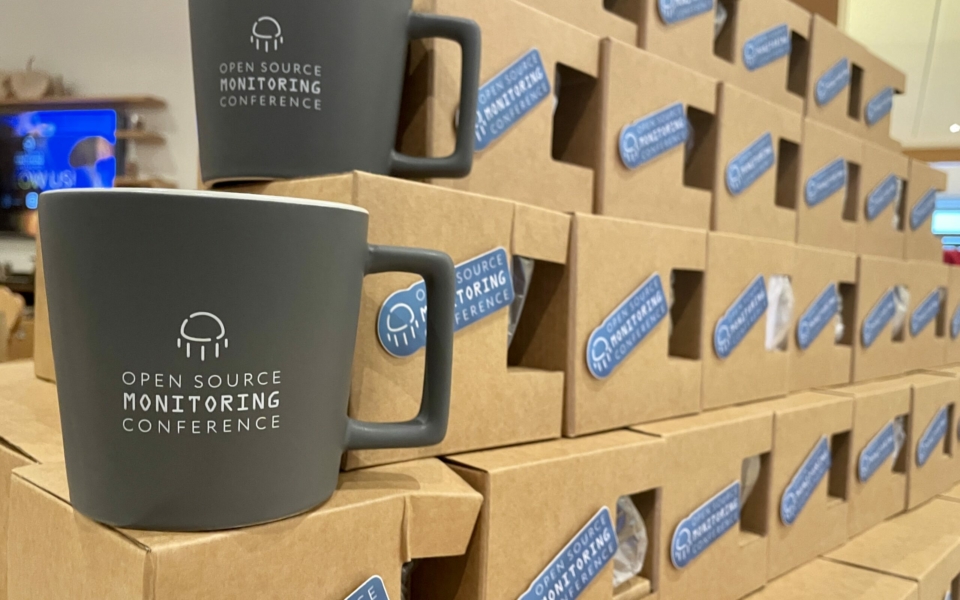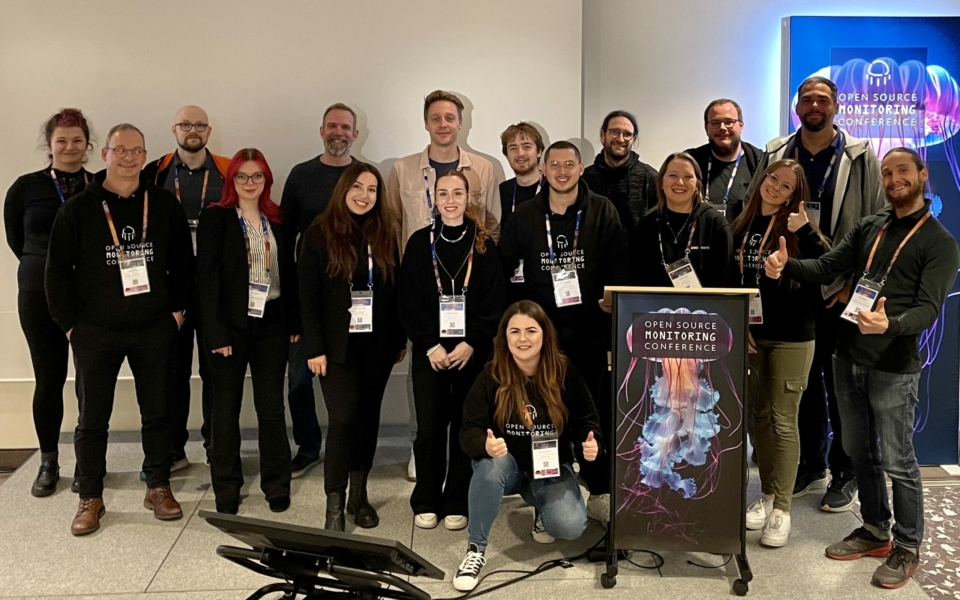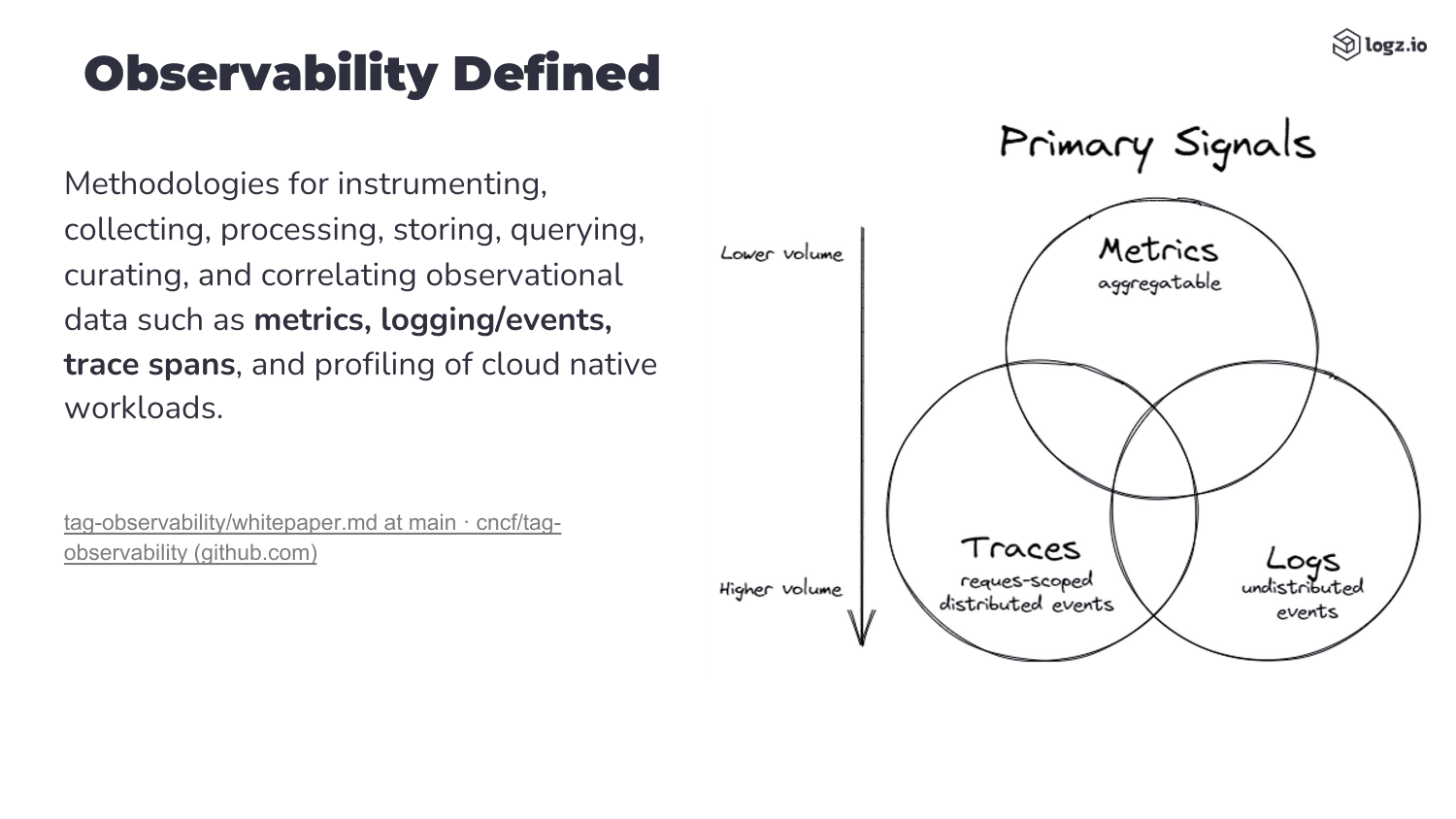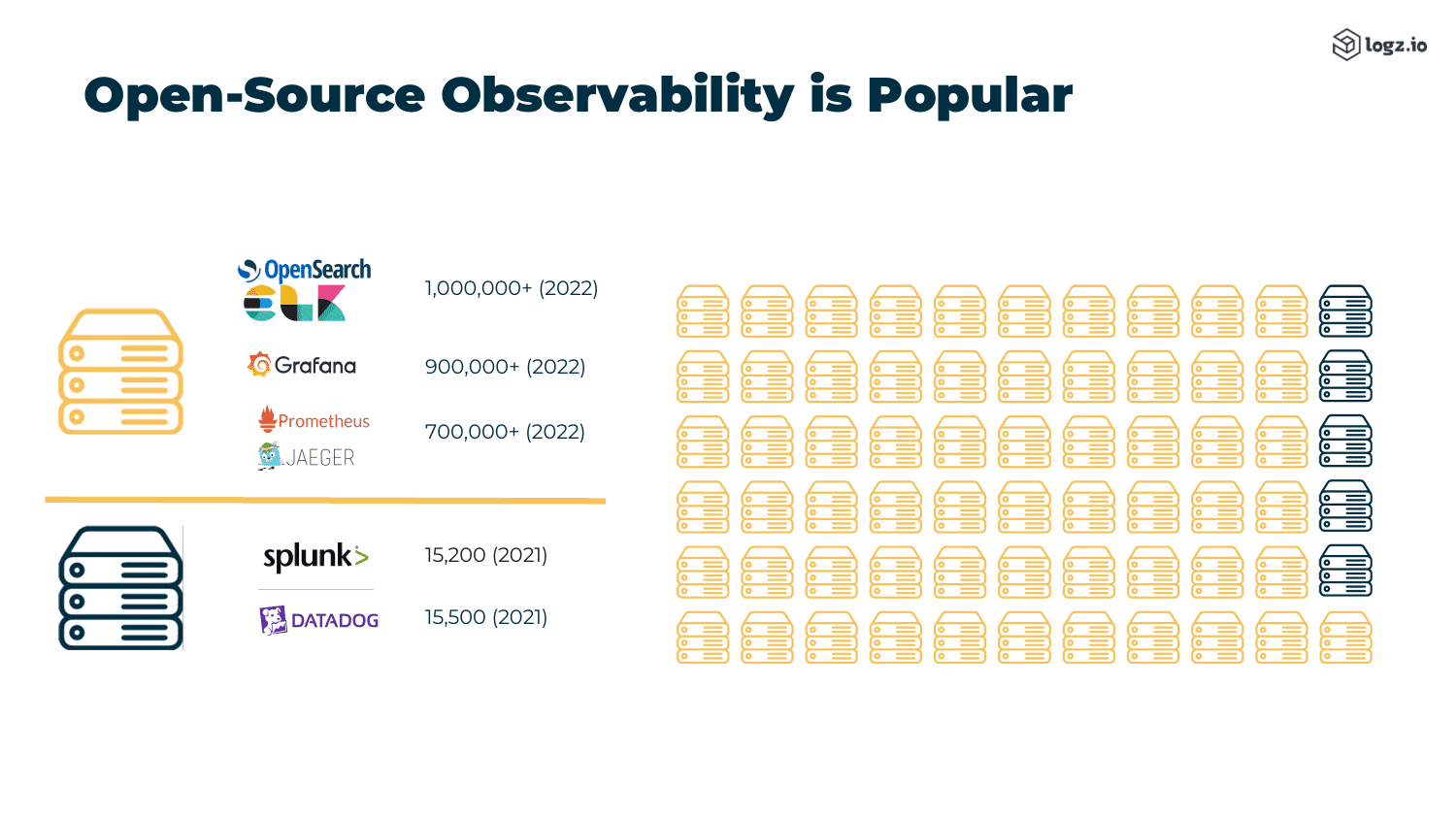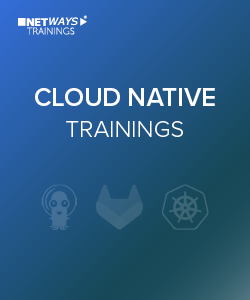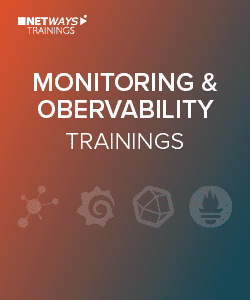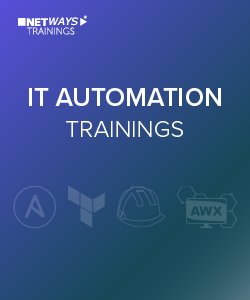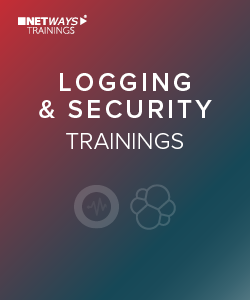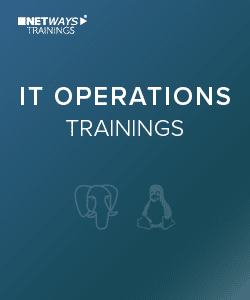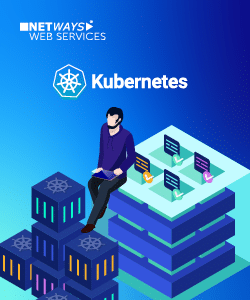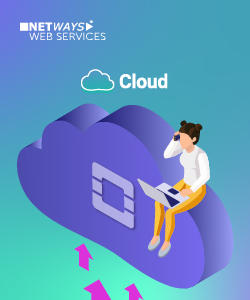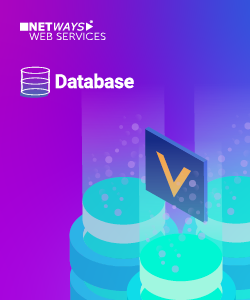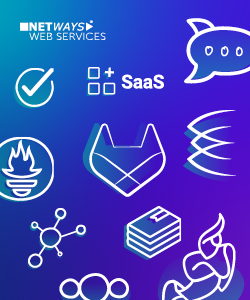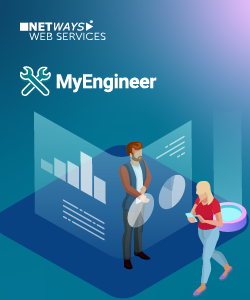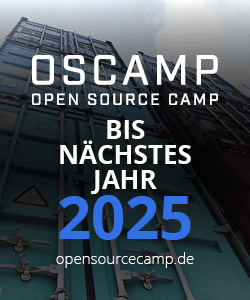Schneller als man denkt, neigte sich auch das Jahr 2023 einem Ende zu. Viele tolle Ereignisse, zahlreiche neue Gesichter, einzigartige Events, und jede Menge Know-How prägten unsere diesjährigen Blogaktivitäten. Werfen wir nun gemeinsam einen Blick zurück auf alle besonderen Momente dieses Jahres, an die wir uns gerne zurückerinnern.
#Life@NETWAYS
Anfang des Jahres haben wir gemeinsam einen kurzen Skiurlaub im Bayerischen Wald genossen. Skifahren, Snowboarden, Wandern und gemeinsames Kochen haben unsere Reise zu einem unvergesslichen Erlebnis gemacht. Kurz darauf stand bei unseren Azubis deren alljährliche Projektwoche an. Gemeinsam arbeiteten sie eine Woche daran einen Arcade-Automaten ins Leben zu rufen. Ein Ergebnis, das sich definitiv sehen lassen kann! Auch für Partys und sonstige interne Veranstaltungen waren wir immer zu haben. Egal ob beim „Tanz in den Mai“, der Sommerparty oder zuletzt bei unserer gemeinsamen Weihnachtsfeier – einen Grund zu feiern gibt es bei uns immer!
Unsere Events
Da wir gerade bei Veranstaltungen sind, leiten wir direkt weiter zu den zwei wichtigsten Konferenzen, die NETWAYS Event Services dieses Jahr organisierte: stackconf und OSMC. Beide Open Source Konferenzen waren ein großer Erfolg, den wir in erster Linie unserem Event-Team, also Markus und Lukas zu verdanken haben. Aber auch allen anderen Mitarbeitenden, die die Veranstaltungen durch Moderation, Social Media, Fotographie oder Videoaufnahme unterstützt haben, gilt ein großer Dank!
Neue Gesichter
Auch in diesem Jahr freuten wir uns über eine Vielzahl an neuen Gesichtern, die frischen Wind mit in die Firma brachten. Ingrida und Sebastian unterstützen seit diesem Jahr als Marketing Specialists unsere Marketingabteilung, Lucy als Consultant das Team NETWAYS Professional Services und Noé und Alvar sind als Developer bei Icinga angesiedelt. Außerdem haben wir sechs neue Azubis hinzugewonnen.
Hipp Hipp Hurra!
Ein besonderer Dank gilt in diesem Jahr Marius und Sefan G., die bereits seit 20 Jahren Teil des Teams sind, sowie Nadja, Markus W., und Thomas W., welche ihr 10-jähriges Jubiläum feiern durften. Nochmals herzlichen Glückwunsch und vielen Dank für Eure langjährige Mitarbeit!
Neues von NETWAYS Web Services
Auch unser NETWAYS Managed Services Team hatte dieses Jahr einige erwähnenswerte Neuerungen. Das NWS Customer Interface wurde um die NWS-ID erweitert, was bedeutet, dass Du in Deinem eigenen Konto Organisationen erstellen, Benutzergruppen bestimmte Berechtigungen erteilen und die dazugehörigen Benutzer hinzufügen kannst. Egal, ob Du ein Cloud-Projekt oder einen Kubernetes-Cluster eingerichtet hast, beide sind jetzt mit NWS-ID integriert! Zudem gab es für alle Kubernetes Nutzer ein neues Release: Cilium – ein fortschrittliches CNI, welches ausgefeilte Netzwerk- und Sicherheitsfunktionen bietet. Im SaaS-Portfolio kam Managed Bookstack hinzu, eine leistungsstarke, benutzerfreundliche Wiki Software. Außerdem haben wir unsere Tutorial Reihe um einige Kubernetes und Cloud Tutorial erweitert.
Neues von NETWAYS Professional Services
Wir haben auch dieses Jahr unser Produktportfolio erweitert. Seit Kurzem bietet NETWAYS Professional Services auch Supportverträge für das Open Source Automation Tool Ansible, an. Unsere Support Engineers unterstützen Dich gerne bei dem Betrieb Deiner Ansible Umgebung – für Deinen Erfolg!
Ein großer Dank gilt an dieser auch unseren Mitarbeitern aus dem Vertriebsteam, welche ganzjährig unsere Kunden rund um unsere Open Source Produkte sowie Consulting- und Support-Dienstleistungen beraten!
Highlights aus dem Blog:
Zum Abschluss haben wir jetzt noch ein Ranking mit den besten besten und beliebtesten Blogposts dieses Jahres zusammengestellt. Falls Ihr sie nicht schon gelesen habt, ist jetzt die beste Gelegenheit dazu:
Platz 1:
Unser Weg von Confluence zu BookStack
Platz 2:
Die Migration von IDO zu Icinga DB – so geht’s kinderleicht!
Platz 3:
Semaphore, Rundeck oder AWX – Welches Tool eignet sich als Ansible-GUI?
Platz 4:
Platz 5:
Icinga mit IcingaDB auf Ubuntu 20.04 / 22.04 installieren
Platz 6:
Icinga nun auch mit IcingaDB einfach und leicht installieren – der Icinga-Installer
Platz 7:
Raycast, ein fast neuer und genialer App Launcher
Platz 8:
Icinga – so wählst du Plattform und Betriebssystem
Platz 9:
Icinga Web und Icinga DB Web auf Ubuntu 20.04 / 22.04 installieren
Platz 10:
Icinga Monitoring-Satelliten – wieso sie für dich sinnvoll sind
Viel Spaß beim Durchblättern!
Wir wünschen Euch allen ein schönes Weihnachtsfest und einen guten Rutsch ins neue Jahr. Wir freuen uns auf 2024 und darauf, wieder viele tolle Momente, inspirierende Projekte, Know-How und Einblicke in unser #Life@NETWAYS mit Euch teilen zu dürfen!


